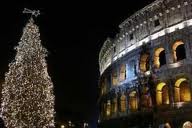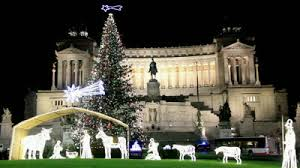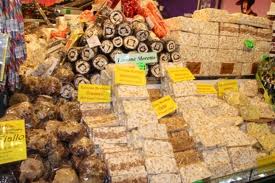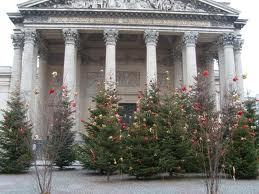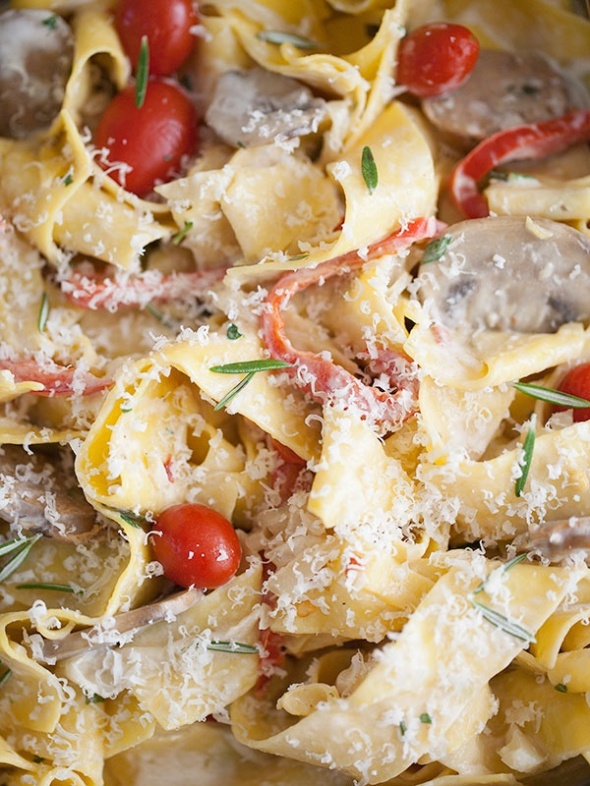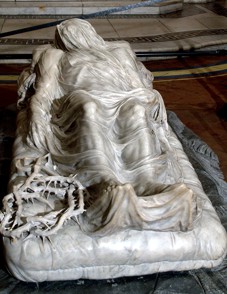One of my very favorite Italian pastas is Gnocchi. A traditional dish that has been been served since the early Roman times. The word gnocchi itself means “lumps”, but it has been said that it’s derived from the Italian word, nocca – which means knuckle or nocchio – a knot in the wood. This particular gnocchi recipe I am sharing, uses ricotta cheese as the base, which produces a lighter, pillow-like consistency. But you will have to prepare at least 2 days in advance, because you will need to drain the ricotta overnight, and then freeze the gnocchi before cooking them. However, I promise that it will be well worth the effort!

Everyone knows that one of the most quintessential Italian exports is Pesto – but not everyone knows that it originated in Genoa, Italy before it made its way around the world. Pesto gets its name from the Italian verb pestare which means to crush or pound, and it’s traditionally made by using a wooden pestle and a marble mortar to grind the dry ingredients to a paste to which a drizzle of olive oil is slowly added to create a thick sauce. One of the biggest issues cooks have when making pesto is keeping it really green in color and I will give you a great tip how to do just that.
Ricotta Gnocchi
Ingredients for the gnocchi:
3 pounds whole-milk ricotta, drained overnight in cheesecloth (in refridgerator)
6 egg yolks
2 teaspoons sea salt
¾ cup all-purpose flour, plus extra for sprinkling and dusting
To prepare gnocchi:
Using the back of a large spoon, press the ricotta through a fine-mesh sieve into a large bowl. Add the egg yolks and sea salt. With a rubber spatula, gently fold in the flour; the less you work the dough, the lighter and tender the gnocchi will be. (This is very important – if not your gnocchi will end up chewy) Cover and refrigerate for 30 minutes.
Lightly sprinkle a cold and smooth work surface, ( I use a marble cutting board or you can use a countertop) and two baking sheets with flour.
Pull off about a quarter of the gnocchi dough and gently roll it into a rope about 1 inch wide. Using a sharp knife dipped in flour, cut the rope into 1-inch pieces. Gently transfer each gnocchi to a baking sheet and dust with flour. Repeat with the remaining dough, slide the gnocchi on trays into the freezer and freeze for at least 24 hours, and up to 1 month. (Take the gnocchi directly from the freezer, and place them into the boiling water to insure the best consistency.)
Bring a large pot of salted water to a boil over high heat. Cook about 24 gnocchi for 30-45 seconds after they float to the surface, or 2- 2 ½ minutes. With a skimmer, transfer the gnocchi to warm serving plates. Cook the remaining gnocchi while the first batch is plated.
Pesto alla Genovese:
Serves about 4
Pesto is one of those sauces that everyone likes a little bit differently. I like mine with a bit more texture, so I add extra pine nuts that are lightly chopped. You need to test it and taste for the balance that you like the best. So you can add a little more salt, garlic, cheese if you like. By the way, another interesting and delish twist is to substitute the basil leaves with a few or entirely with rughetta /arugula which produces a slightly bitter, more peppery version.
I do suggest making extra batches, you can freeze the Pesto for future use. I freeze the pesto in ice cube trays and then pop them in individual freezer bags. I can just pop out a few pesto cubes when I need them. You can also store them packed down into containers with a little layer of olive oil on top.
Pesto Ingredients:
1.7 oz. of fresh basil leaves
2 cloves of garlic
3.5 oz. of extra virgin olive oil
6 tablespoons of grated Parmigiano-Reggiano or Pecorino Romano
2 tablespoons of pine nuts
A pinch of sea salt
While can use a food processer to save time, the most authentic Italian method is to use a pestle and mortar which will give the freshest, most flavorsome result. Provided you have the patience and arm strength to obtain the right consistency.
If you’re using a Pestle and Mortar:
First crush the garlic and salt then add the basil leaves and grind until it starts to release its oil. Then add the pine nuts, crushing them until they become almost creamy. Mix in the parmesan and then slowly drizzle in the olive oil which mixing until you obtain a thick sauce.
Food Processor/ Ice Bath Method
To get the brightest green pesto you need to use the ice bath method. Bring to a boil a huge pot of salted water. While it is heating, prepare a large ice bath. (Large bowl with water & ice) In a food processor on low speed add the pine nuts and garlic with some of the olive oil. When the salted water is boiling, add the basil leaves in batches for only 8-10 seconds at a time – do not overcook! Remove immediately with skimmer and plunge into the ice bath, swirling them around. Remove and drain of the excess water using either a salad spinner, a colander or placing on paper towels. Repeat until all of the basil has been blanched and patted dry.
Add all the blanched basil (can be a little damp) to the food processor with the pine nut-garlic mixture and blend again on low-speed, slowly adding the rest of the olive oil and salt. Puree until the texture is to your liking.
One of the biggest mistakes of making pesto in a food processor is blending on high, especially if you don’t blanch the basil leaves. It warms up the basil and will make the pesto soupy – so if you are not going to use the ice bath method. Put your food processor bowl in the freezer to cool it down first and follow the same directions –add pine nuts, garlic and olive oil – blend on low- then add basil – a little more oil until it’s the right texture/consistency you like.
Buon Appetito and let me know how your Ricotta Gnocchi & Pesto alla Genovese comes out!











